Schumacher SP-200 User Manual
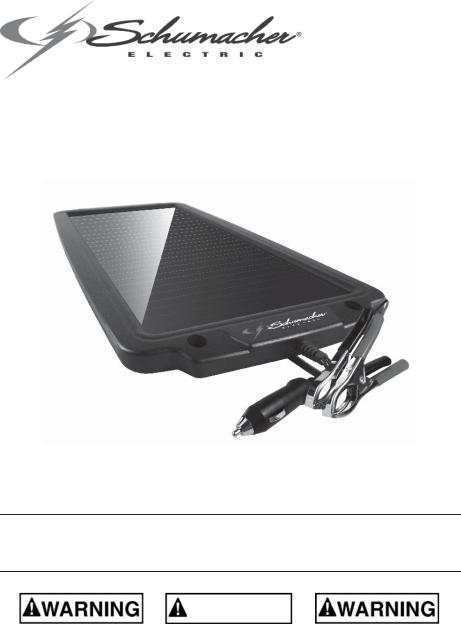
OWNER’S MANUAL • MANUAL DEL USUARIO • GUIDE D’UTILISATION
Model / Modelo / Modèle SP-200
Solar Battery Maintainer • Mantenedor Solar de Baterías • Dispositif D’entretien de Batterie Solaire
Voltage / Tensión: 12
Wattage / Watts: 2.4
Tension : 12 V / Puissance : 2,4 W
ADVERTENCIA
•READ THE ENTIRE MANUAL BEFORE USING THIS PRODUCT. FAILURE TO DO SO COULD RESULT IN SERIOUS INJURY OR DEATH.
•LEA EL MANUAL COMPLETO ANTES DE UTILIZAR ESTE PRODUCTO. SI NO LO HACE PODRÍA SUFRIR LESIONES GRAVES O LA MUERTE.
•LIRE LE MANUEL AU COMPLET AVANT D’UTILISER CE PRODUIT. SINON IL Y A UN RISQUE DE BLESSURES GRAVES OU DE MORT.
00-99-001107/0710

DO NOT RETURN THIS PRODUCT
TO THE STORE!
Call Customer Service for Assistance: 800-621-5485
¡NO DEVUELVA ESTE PRODUCTO
A LA TIENDA!
Llame al Servicio de Atención al Cliente para recibir asistencia:
800-621-5485
NE RETOURNEZ PAS CE PRODUIT AU MAGASIN OÙ VOUS L’AVEZ ACHETÉ!
Appelez le service à la clientèle pour obtenir de l’aide :
1 800 621-5485

TABLE OF CONTENTS
SECTION |
PAGE |
IMPORTANT SAFETY INSTRUCTIONS |
2 |
PERSONAL PRECAUTIONS |
3 |
PREPARING TO MAINTAIN |
3 |
SOLAR BATTERY MAINTAINER LOCATION |
4 |
DC CONNECTION PRECAUTIONS |
4 |
FOLLOW THESE STEPS WHEN BATTERY IS INSTALLED IN VEHICLE 4 |
|
FOLLOW THESE STEPS WHEN BATTERY IS OUTSIDE VEHICLE |
5 |
FEATURES |
6 |
ASSEMBLY AND MOUNTING INSTRUCTIONS |
6 |
OPERATING INSTRUCTIONS |
6 |
MAINTENANCE INSTRUCTIONS |
8 |
MOVING AND STORAGE INSTRUCTIONS |
8 |
BEFORE RETURNING FOR REPAIRS |
8 |
SPECIFICATIONS |
8 |
LIMITED WARRANTY |
9 |

ÍNDICE
SECCIÓN |
PÁGINA |
INSTRUCCIONES IMPORTANTES DE SEGURIDAD |
14 |
PRECAUCIONES PERSONALES |
15 |
PREPARACIÓN PARA EL MANTENIMIENTO |
16 |
UBICACIÓN DEL MANTENEDOR SOLAR DE BATERÍAS |
16 |
PRECAUCIONES DE CONEXIÓN A CC |
17 |
SIGA ESTOS PASOS CUANDO LA BATERÍA ESTÉ COLOCADA |
|
EN EL VEHÍCULO |
17 |
SIGA ESTOS PASOS CUANDO LA BATERÍA SE ENCUENTRE |
|
FUERA DEL VEHÍCULO |
18 |
CARACTERÍSTICAS |
18 |
INSTRUCCIONES DE MONTAJE Y ENSAMBLAJE |
19 |
INSTRUCCIONES DE OPERACIÓN |
19 |
INSTRUCCIONES DE MANTENIMIENTO |
20 |
INSTRUCCIONES PARA EL TRASLADO Y ALMACENAMIENTO |
21 |
ANTES DE DEVOLVER A REPARACIONES |
21 |
GARANTÍA LIMITADA |
21 |

TABLE DES MATIÈRES
SECTION |
PAGE |
IMPORTANTES CONSIGNES DE SÉCURITÉ |
26 |
PRÉCAUTIONS PERSONNELLES |
27 |
PRÉPARATION |
28 |
EMPLACEMENT DU DISPOSITIF D’ENTRETIEN DE BATTERIE SOLAIRE 28 |
|
PRÉCAUTIONS DE RACCORDEMENT CC |
29 |
ÉTAPES À SUIVRE SI LA BATTERIE EST INSTALLÉE DANS |
|
LE VÉHICULE |
29 |
ÉTAPES À SUIVRE SI LA BATTERIE EST HORS DU VÉHICULE |
30 |
CARACTÉRISTIQUES |
30 |
ASSEMBLAGE ET MONTAGE |
31 |
MODE D’EMPLOI |
31 |
ENTRETIEN |
32 |
DÉPLACEMENT ET RANGEMENT |
33 |
SI DES RÉPARATIONS SONT NÉCESSAIRES |
33 |
SPÉCIFICATIONS |
33 |
GARANTIE LIMITÉE |
33 |
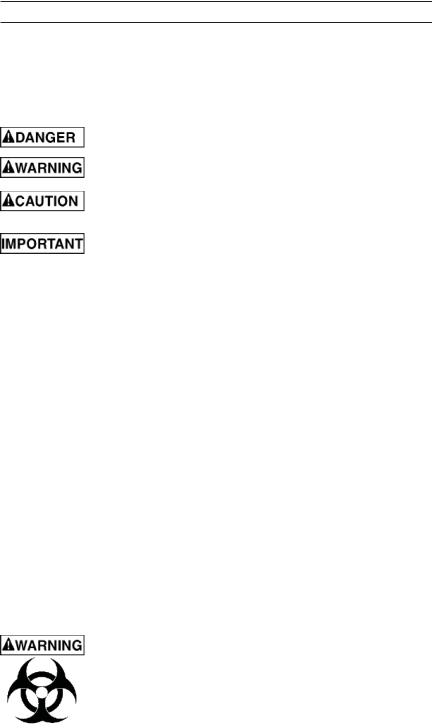
IMPORTANT: READ AND SAVE THIS SAFETY AND INSTRUCTION MANUAL.
SAVE THESE INSTRUCTIONS – The SP-200 offers a wide range of features to accommodate your needs. This manual will show you how to use your solar battery maintainer safely and effectively. Please read, understand and follow these instructions and precautions carefully, as this manual contains important safety and operating instructions. The safety messages used throughout this manual contain a signal word, a message and an icon.
The signal word indicates the level of the hazard in a situation.
Indicates an imminently hazardous situation which, if not avoided, will result in death or serious injury to the operator or bystanders.
Indicates a potentially hazardous situation which, if not avoided, could result in death or serious injury to the operator or bystanders.
Indicates a potentially hazardous situation which, if not avoided, could result in moderate or minor injury to the operator or bystanders.
Indicates a potentially hazardous situation which, if not avoided, could result in damage to the equipment or vehicle or property damage.
Safety messages in this manual contain two different type styles.
•Unnumbered type states the hazard.
•Numbered type states how to avoid the hazard.
The icon gives a graphical description of the potential hazard.
Pursuant to California Proposition 65, this product contains chemicals known to the State of California to cause cancer and birth defects or other reproductive harm.
• 1 •
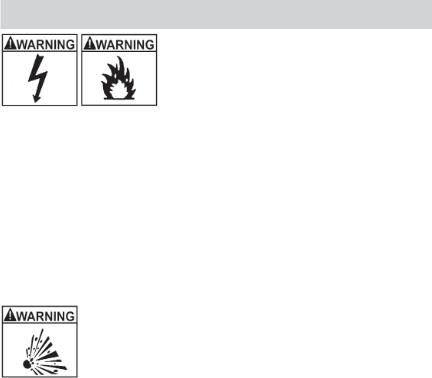
1.IMPORTANT SAFETY INSTRUCTIONS - SAVE THESE INSTRUCTIONS -
This manual contains important safety and operating instructions
RISK OF ELECTRIC SHOCK OR FIRE.
1.1Keep out of reach of children.
1.2Do not expose the solar battery maintainer to rain or snow.
1.3Use only recommended attachments. Use of an attachment not recommended or sold by Schumacher® Electric Corporation may result in a risk of fire, electric shock or injury to persons or damage to property.
1.4To reduce the risk of electric shock, unplug the clips from the solar panel before attempting any maintenance or cleaning.
1.5Do not operate the solar battery maintainer if it has received a sharp blow, been dropped or otherwise damaged in any way; take it to a qualified service person. (Call customer service at: 1-800-621-5485.)
1.6Do not disassemble the solar battery maintainer; take it to a qualified service person when service or repair is required. Incorrect reassembly may result in a risk of fire or electric shock. (Call customer service at: 1-800-621-5485.)
RISK OF EXPLOSIVE GASES.
1.7WORKING IN THE VICINITY OF A LEAD-ACID BATTERY IS DANGEROUS. BATTERIES GENERATE EXPLOSIVE GASES DURING NORMAL BATTERY OPERATION. FOR THIS REASON, IT IS OF UTMOST IMPORTANCE THAT YOU FOLLOW THE INSTRUCTIONS EACH TIME YOU USE THE SOLAR BATTERY MAINTAINER.
1.8To reduce the risk of a battery explosion, follow these instructions and those published by the battery manufacturer and the manufacturer of any equipment you intend to use in the vicinity of the battery. Review the cautionary markings on these products and on the engine.
1.9If used in a garage, locate this solar battery maintainer 18 inches (45.72 cm) or more above floor level. Do not place on wet ground, anywhere it could be accidently stepped on or in a place or position where it could fall while being used.
• 2 •
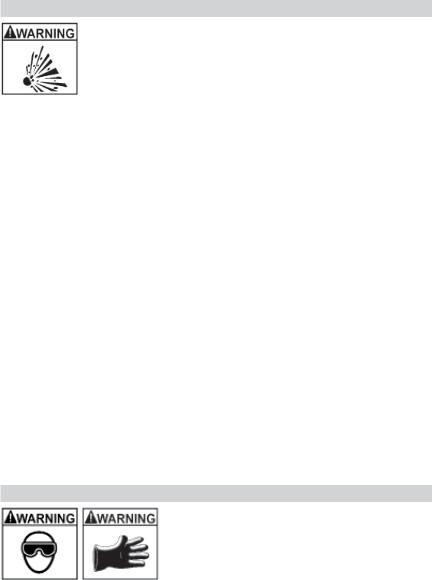
2.PERSONAL PRECAUTIONS
RISK OF EXPLOSIVE GASES.
2.1NEVER smoke or allow a spark or flame in the vicinity of a battery or engine.
2.2Remove personal metal items such as rings, bracelets, necklaces and watches when working with a lead-acid battery. A lead-acid battery can produce a shortcircuit current high enough to weld a ring or the like to metal, causing a severe burn.
2.3Be extra cautious to reduce the risk of dropping a metal tool onto the battery. It might spark or short-circuit the battery or other electrical part that may cause an explosion.
2.4Use this solar battery maintainer for maintaining LEAD-ACID batteries only. It is not intended to supply power to a low voltage electrical system other than in a starter-motor application. Do not use this solar battery maintainer for maintaining dry-cell batteries that are commonly used with home appliances. These batteries may burst and cause injury to persons and damage to property.
2.5NEVER maintain a frozen battery.
2.6Consider having someone close enough by to come to your aid when you work near a lead-acid battery.
2.7Have plenty of fresh water and soap nearby in case battery acid contacts your skin, clothing or eyes.
2.8Wear complete eye and body protection, including safety goggles and protective clothing. Avoid touching your eyes while working near the battery.
2.9If battery acid contacts your skin or clothing, immediately wash the area with soap and water. If acid enters your eye, immediately flood the eye with cold running water for at least 10 minutes and get medical attention right away.
2.10If battery acid is accidentally swallowed, drink milk, the whites of eggs or water. DO NOT induce vomiting. Seek medical attention immediately.
3.PREPARING TO MAINTAIN
RISK OF CONTACT WITH BATTERY ACID.
BATTERY ACID IS A HIGHLY CORROSIVE
SULFURIC ACID.
3.1If it is necessary to remove the battery from the vehicle to maintain it, always remove the grounded terminal first. Make sure all of the accessories in the vehicle are off to prevent arcing.
3.2Be sure the area around the battery is well ventilated while the battery is being maintained.
3.3Clean the battery terminals before maintaining the battery. During cleaning, keep airborne corrosion from coming into contact with your eyes, nose and mouth. Use baking soda and water to neutralize the battery acid and help eliminate airborne corrosion. Do not touch your eyes, nose or mouth.
•3 •
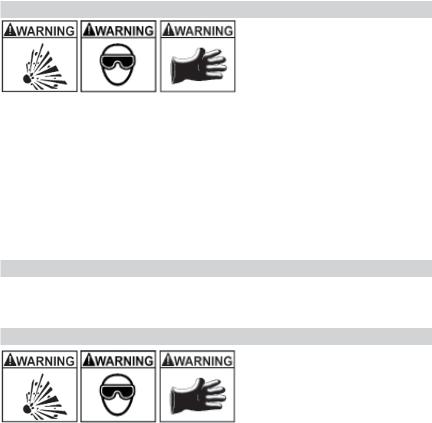
3.4Add distilled water to each cell until the battery acid reaches the level specified by the battery manufacturer. Do not overfill. For a battery without removable cell caps, such as valve regulated lead acid batteries (VRLA), carefully follow the manufacturer’s recharging instructions.
3.5Read, understand and follow all instructions for the solar battery maintainer, battery, vehicle and any equipment used near the battery and solar battery maintainer. Study all of the battery manufacturer’s specific precautions while maintaining.
3.6Determine the voltage of the battery by referring to the vehicle owner’s manual and make sure that the output voltage of the solar battery maintainer is the correct voltage.
3.7Make sure that the solar battery maintainer cable clips make tight connections.
4.SOLAR BATTERY MAINTAINER LOCATION
RISK OF EXPLOSION AND
CONTACT WITH BATTERY ACID.
4.1Locate the solar battery maintainer as far away from the battery as the DC cables permit.
4.2Never place the solar battery maintainer directly above the battery being maintained; gases from the battery will corrode and damage the solar battery maintainer.
4.3Do not set the battery on top of the solar battery maintainer.
4.4Never allow battery acid to drip onto the solar battery maintainer when reading the electrolyte specific gravity or filling the battery.
4.5Do not operate the solar battery maintainer in a closed-in area or restrict the ventilation in any way.
5.DC CONNECTION PRECAUTIONS
5.1Never allow the clips to touch each other.
5.2Attach the clips to the battery and chassis, as indicated in sections 6 and 7.
6.FOLLOW THESE STEPS WHEN BATTERY IS INSTALLED IN VEHICLE
A SPARK NEAR THE BATTERY
MAY CAUSE A BATTERY
EXPLOSION. TO REDUCE THE
RISK OF A SPARK NEAR THE
BATTERY:
6.1Position the DC cables to reduce the risk of damage by the hood, door and moving or hot engine parts. NOTE: If it is necessary to close the hood during the maintaining process, ensure that the hood does not touch the metal part of the battery clips or cut the insulation of the cables.
6.2Stay clear of fan blades, belts, pulleys and other parts that can cause injury.
6.3Check the polarity of the battery posts. The POSITIVE (POS, P, +) battery post usually has a larger diameter then the NEGATIVE (NEG, N, -) post.
6.4Determine which post of the battery is grounded (connected) to the chassis.
•4 •

If the negative post is grounded to the chassis (as in most vehicles), see step
6.5. If the positive post is grounded to the chassis, see step 6.6.
6.5For a negative-grounded vehicle, connect the POSITIVE (RED) clip from the solar battery maintainer to the POSITIVE (POS, P, +) ungrounded post of the battery. Connect the NEGATIVE (BLACK) clip to the vehicle chassis or engine block away from the battery. Do not connect the clip to the carburetor, fuel lines or sheet-metal body parts. Connect to a heavy gauge metal part of the frame or engine block.
6.6For a positive-grounded vehicle, connect the NEGATIVE (BLACK) clip from the solar battery maintainer to the NEGATIVE (NEG, N, -) ungrounded post of the battery. Connect the POSITIVE (RED) clip to the vehicle chassis or engine block away from the battery. Do not connect the clip to the carburetor, fuel lines or sheet-metal body parts. Connect to a heavy gauge metal part of the frame or engine block.
6.7Using the quick connect connector, plug the clips into the solar panel.
6.8When disconnecting the solar battery maintainer, unplug the clips from the solar panel, remove the clip from the vehicle chassis and then remove the clip from the battery terminal.
7.FOLLOW THESE STEPS WHEN BATTERY IS OUTSIDE VEHICLE
A SPARK NEAR THE BATTERY
MAY CAUSE A BATTERY
EXPLOSION. TO REDUCE THE
RISK OF A SPARK NEAR THE
BATTERY:
7.1Check the polarity of the battery posts. The POSITIVE (POS, P, +) battery post usually has a larger diameter than the NEGATIVE (NEG, N, -) post.
7.2Attach at least a 24-inch (61 cm) long 6-gauge (AWG) insulated battery cable to the NEGATIVE (NEG, N, -) battery post.
7.3Connect the POSITIVE (RED) solar battery maintainer clip to the POSITIVE (POS, P, +) post of the battery.
7.4Position yourself and the free end of the cable you previously attached to the NEGATIVE (NEG, N, -) battery post as far away from the battery as possible – then connect the NEGATIVE (BLACK) solar battery maintainer clip to the free end of the cable.
7.5Do not face the battery when making the final connection. As stated in 7.4, face away from the battery when connecting the negative clip to the cable.
7.6Using the quick connect connector, plug the clips into the solar panel.
7.7When disconnecting the solar battery maintainer, always do so in the reverse order of the connecting procedure and break the first connection while as far away from the battery as practical.
7.8A marine (boat) battery must be removed and maintained on shore. To maintain it onboard requires equipment specially designed for marine use.
• 5 •
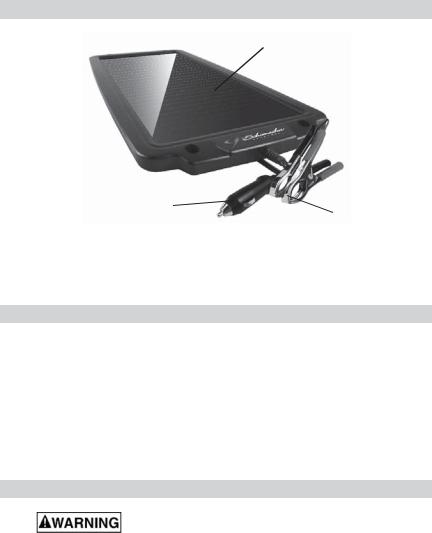
8.FEATURES
1
3
2
1.Solar Panel
2.Battery Clip Cable Assembly
3.12V Accessory Plug Cable Assembly
4.Mounting Screws (not shown)
9.ASSEMBLY AND MOUNTING INSTRUCTIONS
Remove all cord wraps and uncoil the cables prior to using the solar battery maintainer.
To mount the solar battery maintainer;
1.Using the solar panel as a template (guide), mark the location of the four pre-molded mounting holes on a secure, flat surface.
2.If necessary, drill four 7/64” (0.109) dia. pilot holes.
3.Mount the solar panel using the four stainless steel screws provided.
NOTE: Do not over tighten the screws or you will break the plastic frame of the solar panel.
10.OPERATING INSTRUCTIONS
This solar battery maintainer must be properly assembled in accordance with the assembly instructions before it is used.
The solar battery maintainer does not have an ON/OFF switch. The On and Off commands are controlled by placing the solar panel in the sun only after the battery connections have been made.
Charging
1.Ensure that all of the solar battery maintainer components are in place and in good working condition, for example, the plastic boots on the battery clips.
2.Decide whether you are going to use the 12 volt power plug or the battery clips to connect the solar panel to the vehicle. Connect the proper cable to the solar panel making sure the connection is secure.
◦If using the 12 volt power plug, plug the connector into the vehicle’s power outlet making sure the connection is secure.
◦If using the battery clips, Connect the battery following the precautions listed in sections 6 and 7.
•6 •
3.Place the solar panel in the sun. For optimum solar battery maintainer output, face the front (black) side of the solar panel towards the sun, making sure there are no shadows being cast on the panel by the vehicle or other objects. The best orientation to place the solar panel is in a south to north direction with the panel tilted at a suitable angle. The best angle would be the same as your local latitude.
4.To disconnect, reverse the procedure.
Using The Quick-Disconnect Cable Connectors
Connect either of the two output cable assemblies to the solar battery maintainer in seconds. Do not place on wet ground, anywhere it could be accidently stepped on or in a place or position where it could fall while being used.
50 Amp Battery Clips
1.Connect the end of the solar battery maintainer output cable to the end of the 50 Amp Battery clips cable.
2.Follow the steps in sections 6 and 7 to connect the output clips to the battery.
3.After a good electrical connection is made to the battery, place the solar panel in the sun per the instructions in step 3 of the maintaining section.
12V Accessory Plug
Maintain your battery without lifting the hood.
1.Connect the end of the 12V Accessory Plug Cable Quick-Connect to the solar battery maintainer.
2.Insert the 12V accessory plug into the 12V accessory outlet.
3.Route the power cord from the solar battery maintainer through the vehicle’s open window.
4.Place the solar panel in the sun per the instructions in step 3 of the maintaining section.
Maintaining a Battery
The Schumacher SP-200 is a battery maintainer that maintains 12 volt batteries, keeping them at full charge. It can maintain both small and large batteries. If you are maintaining a fully charged large battery, you will be properly utilizing the solar battery maintainer. However, if you were to use this solar battery maintainer to charge a large battery, such as a marine deep cycle battery that was not fully charged, you may lose some of the battery’s capacity. This would cause the large battery to be unable to hold a charge and become useless. Therefore, we do not recommend charging a large battery with this unit.
NOTE: The maintain mode technology utilized in Schumacher maintainers allows you to safely maintain a healthy battery for extended periods of time. However, problems with the battery, electrical problems in the vehicle,
improper connections or other unanticipated conditions could cause excessive current draws. As such, occasionally monitoring your battery and the maintaining process is recommended.
General Maintaining Notes
1.A blocking diode is included in the solar panel to prevent discharging the battery.
2.You MUST disconnect the solar panel from the 12 volt power outlet or battery when starting the engine or driving the vehicle. Electrical surges from the alternator when starting and running may damage the solar panel.
3.Four stainless steel screws are included to mount the solar panel through the pre-drilled holes if desired.
•7 •

11.MAINTENANCE INSTRUCTIONS
11.1After use and before performing maintenance, unplug and disconnect the solar battery maintainer (see sections 6, 7 and 8).
11.2Use a dry cloth to wipe all battery corrosion and other dirt or oil from the battery clips, cords, and the solar panel.
11.3The solar panel uses a glass substrate; please handle with care.
11.4Always keep the glass surface clean using a soft cloth in order to ensure its maximum output.
11.5Ensure that all of the solar battery maintainer components are in place and in good working condition, for example, the plastic boots on the battery clips.
11.6Servicing does not require opening the unit, as there are no user-serviceable parts.
11.7All other servicing should be performed by qualified service personnel.
12.MOVING AND STORAGE INSTRUCTIONS
12.1Store the solar battery maintainer unplugged, in an upright position.
12.2Store inside, in a cool, dry place.
12.3Do not store the clips clipped together, on or around metal, or clipped to cables.
12.4If the solar battery maintainer is moved around the shop or transported to another location, take care to avoid/prevent damage to the cords, clips and solar battery maintainer. Failure to do so could result in personal injury or property damage.
13.BEFORE RETURNING FOR REPAIRS
13.1When a maintaining problem arises, make certain that the battery is capable of accepting a normal charge. Double check all connections, the solar battery maintainer clips for correct polarity and the quality of the connections from the cables to the clips and from the clips to the battery system. The clips must be clean.
13.2When a battery is very cold, partially maintained or sulfated, it will not draw the full rated amperes from the solar battery maintainer. It is both dangerous and damaging to a battery to force higher amperage into it than it can effectively use in recharging.
13.3When an UNKNOWN OPERATING PROBLEM arises, please read the complete manual and call the customer service number for information that will usually eliminate the need for return.
If the above solutions do not eliminate the problem or for information about troubleshooting, call toll-free from anywhere in the U.S.A.
1-800-621-5485
7:00 am to 5:00 pm Central Time Monday through Friday
14. SPECIFICATIONS |
|
Peak Power Output ----------------------------------------------------------------- |
2.4 Watt |
Tested under Standard Condition ---------------------- |
AM1.5, 100mW/c m2, 25°C |
Optimum Working Voltage --------------------------------------------------------- |
17.50 V |
Optimum Working Current --------------------------------------------------------- |
130 mA |
• 8 •
